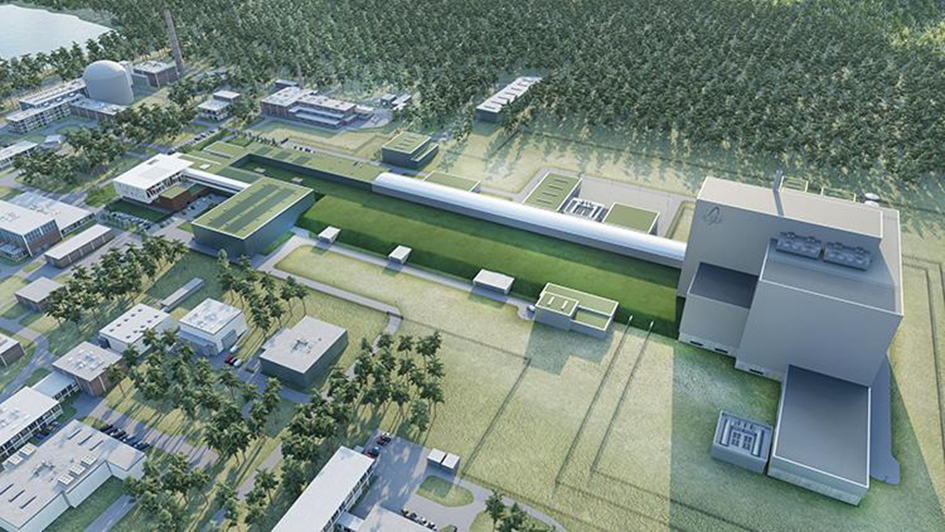Hein Brookhuis
Over the past decades, the European Commission has increasingly aimed to include scientific collaboration explicitly in its political project. With the introduction of the European Research Area in 2000, the Commission hoped to create a “borderless market for research, innovation and technology.”
The origins and dynamics of this European science policy have been widely studied over the past decades, often from the perspective of political science. The ways in which the policies impacted scientists and scientific institutions has been less studied. How did scientists use the new policy instruments to advance their scientific projects? Through the study of one specific project, namely the establishment of a new research reactor in Belgium, my research project aimed to complement existing literature with a more historical approach [Brookhuis 2023].
The Belgian MYRRHA project entails the construction of an accelerator-driven research reactor, which primarily aims to demonstrate the feasibility of reducing the longevity and radiotoxicity of some elements in spent nuclear fuel. Between 1998 and 2010, this project was part of several European research programs. By having access to notes, correspondences, interviews and internal strategic documents, this historical study of European science policy can inform us better on the impact of policy changes on research communities. How did European policies impact collaboration among scientists? How did this effect their projects? In this blog post, I will highlight three interactions between European Science Policy and the Belgian MYRRHA project to reflect on the role of Big Science in the European Research Area.
Balancing European and Belgian ambitions
For the purpose of this blog post, I will highlight three moments in which European scientific and political developments intertwined with the MYRRHA project. While the Belgian project initially focused on a small-scale instrument that would primarily focus on (commercial) medical applications, a similar reactor-concept experienced a major political breakthrough in Europe as a potential alternative solution for nuclear waste, propagated by Nobel laureate Carlo Rubbia. Although Rubbia’s plans were often criticized by his peers, he became the chair of a European Technical Working Group on the topic, stimulating efforts in the domain of using so-called Accelerator Driven Systems (ADS) for the transmutation of nuclear waste. [TWG – ADS, 2001].
Engaging in European projects also entailed balancing local interests with the attractiveness of international exposure and funding. Initially, Carlo Rubbia’s success was considered damaging for the credibility of the Belgian project, as his views were not necessarily shared by the rest of the scientific community. There was also some hesitancy to integrate the small project into the European collaboration, as this could increase the technological requirements and thus the complexity, costs and timeframe of the project. On the other hand, expanding the range of applications and obtaining European support could help forward the Belgian project, others believed. From 1998 onwards, the Belgian project increasingly engaged in European projects, while also shifting priorities from (local) institutional to more international interests.
Becoming an Integrated Project in the European Research Area
A second noteworthy interaction with European science policies occurred in 2003. That year one of the cornerstones of the European Research Area-proposal, the so-called “Integrated Projects,” was implemented. Integrated Projects (IP) were defined as “projects of substantial size, designed to help build up the ‘critical mass’ in objective-driven research with clearly defined scientific and technological ambitions and aims.” The introduction of this policy instrument can be understood as an expression of discomfort among European policymakers with small-scale projects, often interpreted as fragmentation (Ulnicane, 2020). Indeed, the new policy did not allow similar initiatives to co-exist next to each other, but they had to be integrated in an overarching project. In 2003, the Belgian team was confronted with a situation in which “no European party [was] willing to work for MYRRHA,” as French, German and Italian collaborators preferred a collaboration that excluded the Belgian project.
The role as a European project for MYRRHA was reclaimed after a competing project experienced loss of support on a national level. Meanwhile, the MYRRHA project had to be considered an experimental ADS instrument to demonstrate the technological feasibility of the transmutation of nuclear waste. This way, it could take part in an Integrated Project with the total budget of about 43 million euro [EUROTRANS, Cordis]. While within SCK CEN this orientation was considered of secondary importance by some, it became the main focus throughout the process of European collaboration. The director of SCK CEN had to confess to the Belgian ministry that the project became increasingly complex now that it would be considered a technological demonstration: “this role for MYRRHA has an impact on the design, costs, and timing of the project, but is today unavoidable given the apparent impotence of all possible partners to decide on a big investment decision.”

Impression of the MYRRHA reactor building on the SCK CEN site. Courtesy of SCK CEN.
The diplomatic use of the European Strategy Forum for Research Infrastructure
While the framework programs described so far primarily targeted scientific research projects, the European Commission has also increasingly prioritized the phenomenon of what is called “Research Infrastructures.” [Hallonsten, 2020] Large-scale research infrastructure, including research reactors for nuclear applications, increasingly gained importance in European science policy. One example is the introduction of the European Strategic Forum for Research Infrastructure. Despite the absence of a formal budget, it is considered an important diplomatic tool [Bolliger & Griffiths, 2020]. Among the board of the Belgian Nuclear Research Centre it was believed that “to obtain European financial support, it is necessary to make it to the ESFRI list.”
The Belgian MYRRHA project received its first (small) governmental funding in 2010 and was accepted on the ESFRI list that same year. By then it had thus benefitted from several of the new policy instruments initiated by the European Commission. How effective this will ultimately turn out to be for a Big Science project in a small European nation is not yet to tell. Despite a lack of international commitments at that time, the Belgian government invested 550 million euro in the project in 2018. By 2021, however, projects that had entered the ESFRI list in 2010 reached their 10 years of preparation time, and were reviewed in order to obtain a so-called Landmark status to stay on the list. MYRRHA was the only reviewed project that was rejected this status [ESFRI, 2021]. It appears that despite the introduction of formalized science policies, Big Science is still strongly dependent on national funding opportunities.
Hein Brookhuis is a PhD Candidate at the Belgian Nuclear Research Centre (SCK CEN) and KU Leuven, Belgium.
References
Bolliger, Isabel & Alexandra Griffiths (2020) “The introduction of ESFRI and the rise of national Research Infrastructure roadmaps in Europe,” in Big Science and Research Infrastructures in Europe, edited by Katharina Cramer & Olof Hallonsten, 101 – 127. Edward Elgar Publishing https://doi.org/10.4337/9781839100017.00011
Brookhuis, Hein (2023) Making Belgian Big Science: A History of the MYRRHA Research Reactor (1994—2010), Historical Studies in the Natural Sciences 53 (1); 35-70 https://doi.org/10.1525/hsns.2023.53.1.35
ESFRI (2021) Roadmap 2021 – Strategy Report on Research Infrastructures. Link: roadmap2021.esfri.eu
European Technical Working Group on ADS (2001) A European Roadmap for Developing Accelerator Driven Systems (ADS) for Nuclear Waste Incineration, ENEA. Link: https://inis.iaea.org/collection/NCLCollectionStore/_Public/32/044/32044945.pdf
Hallonsten, Olof (2020) Research Infrastructures in Europe: The Hype and the Field, European Review 28 (4) 617-635 https://doi.org/10.1017/S1062798720000095
Ulnicane, Inga (2020) “Ever-changing Big Science and Research Infrastructures: Evolving European Union Policy,” in Big Science and Research Infrastructures in Europe, edited by Katharina Cramer & Olof Hallonsten, 76 – 100. Edward Elgar Publishing https://doi.org/10.4337/9781839100017.00010
This post was initially published on Europe of Knowledge blog.

